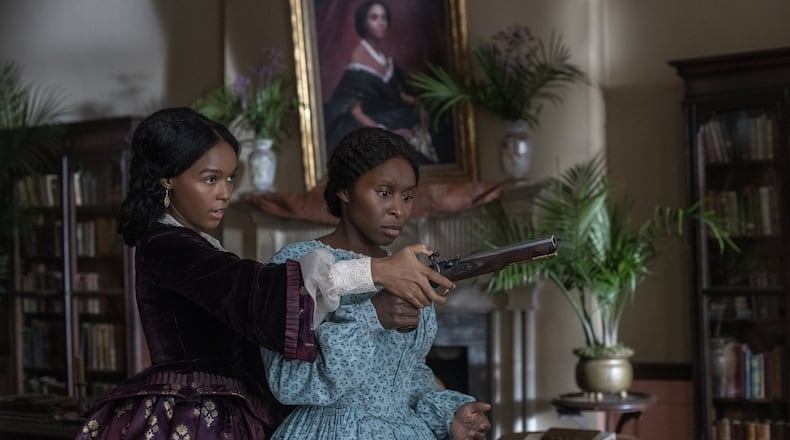In the Kasi Lemmons-directed ‘Harriet’ (out now in theaters), actress Cynthia Erivo portrays Harriet Tubman, a young woman who flees slavery before joining the Underground Railroad network and becoming known as “Moses” for her famed efforts to free other enslaved people.
The film has been met with praise and criticism for its portrayal of Tubman’s life, but Spelman College history professor Dr. Brandi Brimmer — whose expertise is African-American history with a focus on African-American women and family in the 19th century — says it’s just as important to consider how the film depicts the broader experiences of enslaved women.
Brimmer outlines for The Atlanta Journal-Constitution what the film got right — and where she says it lacked important context.
Credit: Furery Reid
Credit: Furery Reid
You did a pre-screening of the movie with students at Spelman. What did you think about the film’s overall depiction of Harriet and slavery?
I was kind of torn. I thought at the onset of the film, there is a real determined effort to help us understand who Harriet Tubman is, what she means to her community [and] her personal life as a young woman. I also think [about] her decision to run and to become a fugitive, and her integration into the community of anti-slavery activists in Philadelphia. … I think this film, at least in part, started a conversation about the sort of activists’ network that was engaged and committed to [anti-slavery]. Ultimately, when we are talking about running away, we’re talking about destroying the system — or taking aim at the system of slavery.
What are some of the things that were troubling to you about the film?
We’re introduced to a figure, Bigger Long, who is a black slave catcher. And, it just sets up a lot of questions that we don’t have context for. And I think my short answer would be, you know, did [the family who enslaved Tubman] hire a slave catcher? We don’t really know that in the sources. If in fact they hired a slave catcher, was he black? We don’t know that. But we do know the slave catcher [probably] would have been white.
Then we’re also asked to believe that the [slave owner’s] son [Gideon], who we really don’t know a lot about in the [source material], is going to shoot the black slave catcher, who we’re also asked to believe that he hired. [Gideon] makes this investment to hire him, but then he’s going to kill him to save Harriet Tubman?
Gideon’s real name was Jonathan, right? But there’s not a lot of source material on him.
Exactly. To fictionalize around all these stories, I think it raises a lot of questions.
When I watched the film, I didn’t think Gideon was saving her. I thought he was saving her to eventually rape her, kill her, torture her, etc.
I think your observation is important, too, in that even if [Gideon] was shooting Bigger Long, she was still very vulnerable to the possibility of sexual exploitation. And I think that conversation isn’t happening as much online and that is because we need a more robust understanding of the female slave experience.
Janelle Monae’s character, Marie Buchanan, is fictionalized, too. What are your thoughts on her?
I’m more apt to accept that character because we know that there’s a robust free black community in Philadelphia. And so while there is no Marie Buchanan in the sources, we know that black women certainly were a part of the anti-slavery network, and it wouldn’t be an impossibility.
RELATED: EXCLUSIVE: Janelle Monáe helps bring ‘Harriet’ to the big screen
Harriet was in her early 20s when she ran away, right?
When she runs away she’s about 20-22 years old. For enslaved women, those are prime years. Even though we don’t have evidence of it, we know that she’s taking direct aim at the institution of slavery but also her owners and divesting them of their investment. From the perspective of enslavers, a female in the age brackets around 22, those are prime years not only for labor but also [for] fertility. She understood her value within the community.
When situating Harriet’s story into the larger story of enslaved women, what do you think is the most important thing for people to know?
We [must] remember that Harriet Tubman’s path to freedom is one of many that black women are engaged [in] during this period. [They might not] run away or take the path to freedom that Harriet Tubman takes to go all the way north because perhaps they’re pregnant, perhaps they have young children, perhaps they have elderly parents. As we know, family and how its defined within enslaved communities is far broader, so perhaps they are a caretaker for a vulnerable person who they feel might be left alone.
They might flee their farm, plantation or their enslaver for shorter periods of time. So, their patterns of fugitivity [might] look different [than Tubman’s].
About the Author
Keep Reading
The Latest
Featured




